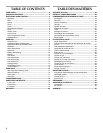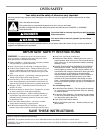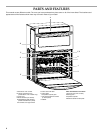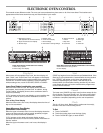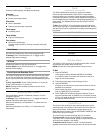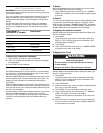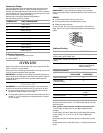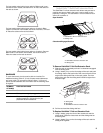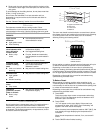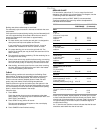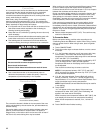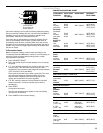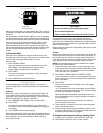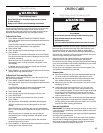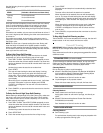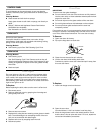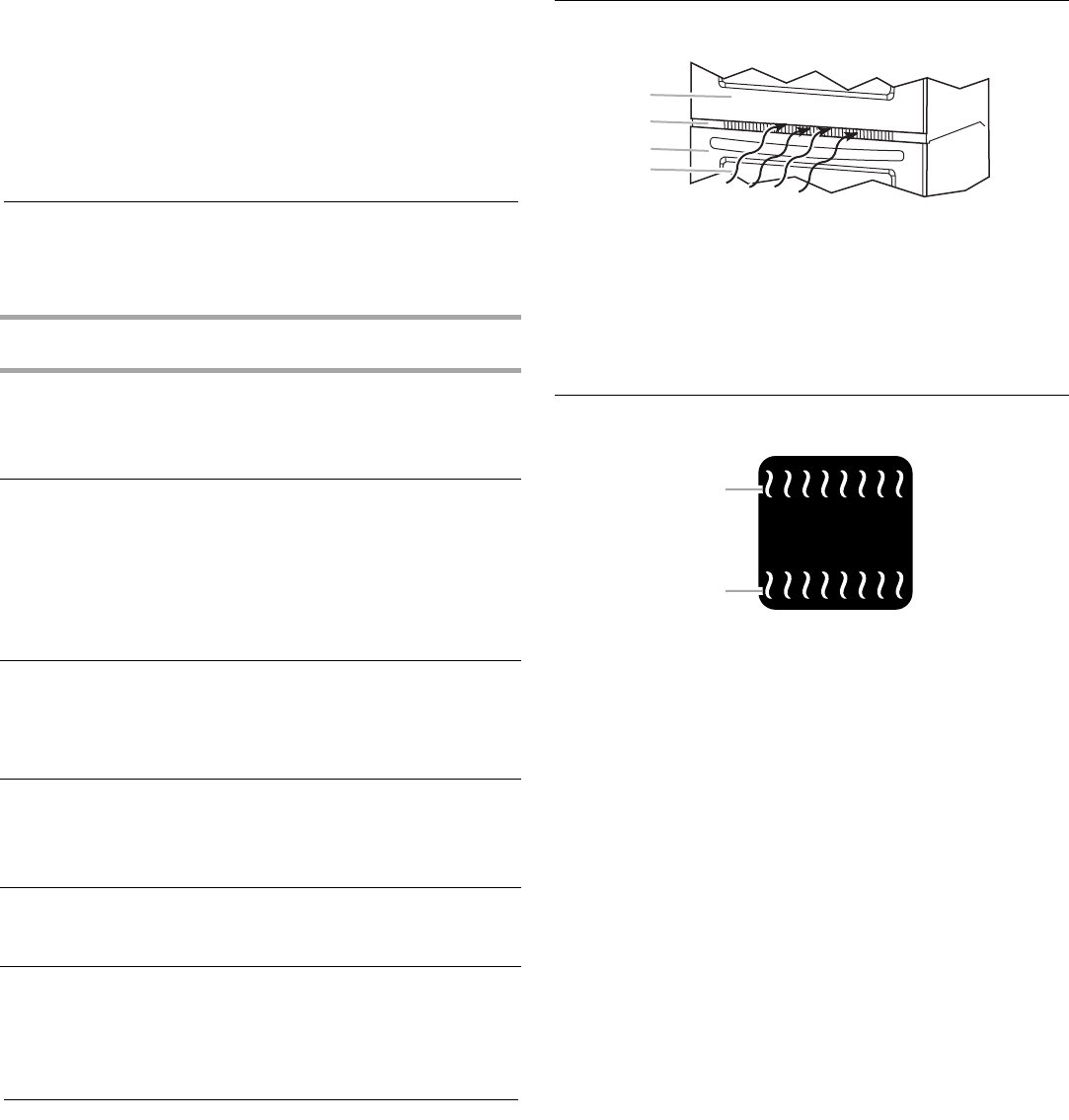
10
3. Slowly push the rack and the sliding shelf to the back of the
oven until the back edge of the rack pulls over the end of the
rack guide.
To avoid damage to the sliding shelves, do not place more than
25 lbs (11.4 kg) on the rack.
Do not clean the SatinGlide™ roll-out extension rack in a
dishwasher. It may remove the rack’s lubricant and affect its
ability to slide.
See the “General Cleaning” section for more information.
Bakeware
The bakeware material affects cooking results. Follow
manufacturer’s recommendations and use the bakeware size
recommended in the recipe. Use the following chart as a guide.
Meat Thermometer
Not all models have a temperature probe. On models without a
temperature probe, use a meat thermometer to determine
whether meat, poultry and fish are cooked to the desired degree
of doneness. The internal temperature, not appearance, should
be used to determine doneness.
Oven Vent
The oven vent should not be blocked or covered since it allows
the release of hot air and moisture from the lower oven. Blocking
or covering lower oven vent will cause poor air circulation,
affecting cooking and cleaning results.
Baking and Roasting
During baking or roasting, the bake and broil elements will cycle
on and off in intervals to maintain the oven temperature.
Depending on the model, if the oven door is opened during
baking or roasting, the heating elements (bake and broil) will turn
off approximately 30 seconds after the door is opened. They will
turn on again approximately 30 seconds after the door is closed.
Depending on the model, the convect fan and element may
operate during the Bake mode.
To Bake or Roast:
Before baking or roasting, position racks according to the
“Positioning Racks and Bakeware” section. When roasting, it is
not necessary to wait for the oven to preheat before putting food
in, unless recommended in the recipe.
Depending on the model, the convection fan and element may
operate during the Bake mode.
1. Touch BAKE.
Touch the number keys to enter a temperature other than
350°F (177°C). The bake range can be set between 145°F
and 550°F (63°C and 288°C).
2. Touch START.
“Lo°” will appear on the oven display if the actual oven
temperature is under 100°F (38°C), and “Preheating” will
appear in the lower area of the display.
When the actual oven temperature reaches 100°F (38°C), the
oven display will begin displaying the temperature as it
increases.
When the set temperature is reached, if on, one tone will
sound.
3. Touch CANCEL when finished cooking.
BAKEWARE/
RESULTS
RECOMMENDATIONS
Light colored
aluminum
■ Light golden crusts
■ Even browning
■ Use temperature and time
recommended in recipe.
Dark aluminum and
other bakeware with
dark, dull and/or
nonstick finish
■ Brown, crisp
crusts
■ May need to reduce baking
temperatures slightly.
■ Use suggested baking time.
■ For pies, breads and casseroles,
use temperature recommended in
recipe.
■ Place rack in center of oven.
Insulated cookie
sheets or baking
pans
■ Little or no bottom
browning
■ Follow rack recommendations in
the “Position Racks and
Bakeware” section.
■ May need to increase baking time.
Stainless steel
■ Light, golden
crusts
■ Uneven browning
■ May need to increase baking time.
Stoneware/Baking
stone
■ Crisp crusts
■ Follow manufacturer’s instructions.
Ovenproof
glassware, ceramic
glass or ceramic
■ Brown, crisp
crusts
■ May need to reduce baking
temperatures slightly.
A.Upper microwave oven
B.Oven vent
C.Lower oven
D.Warm air
A.Broil elements
B.Bake element
A
B
C
D
A
B



